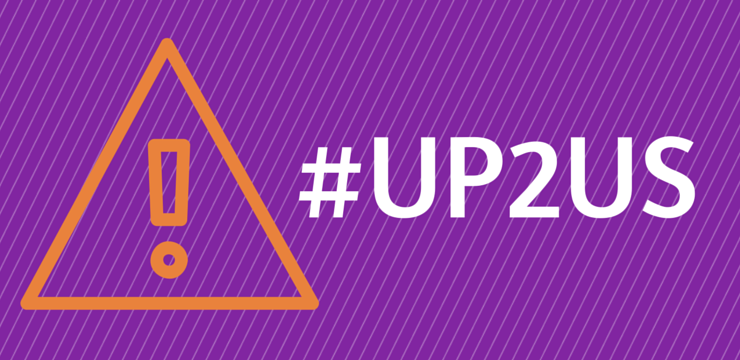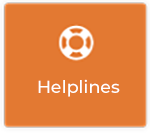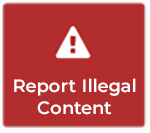UP2US: Lesson 5 – Report: #UP2US

Students will learn what it means to be a bystander and a participant in online bullying and will learn how to take action against cyber bullying through online reporting.
- +Curriculum Links
- Junior Cycle SPHE Short Course Strand 3:
Anti-bullying: Examine the role of participants and bystanders in incidents of bullying; develop guidelines for promoting an inclusive environment and collective responses to bullying.
Additional learning outcomes:
Strand 4: Dealing with tough times. Develop help-seeking skills including what mental-health services and supports are available at local, regional and national levels.
Strand 1: Who am I? Apply decision-making skills in a variety of situations. - +Resources and Methodologies
- Resources: Access to internet for all students. Copies of worksheets 5.1 and 5.2.
- Methodologies: Social-network analysis, Pairs work, Online research, Compiling a written list.
- +Learning Outcomes
- Learning outcomes:
Students will have explored and quantified what it means to be a participant and a bystander in cyber bullying.
Students will be vigilant against cyber bullying.
Students will know how to report bullying on social networking sites and will know what reporting involves. - +Key Skills
- Staying well, Being creative, Working with others, Managing information and thinking, Literacy
- +Teachers' Note
- Activity 5.1: It is very important to make students aware of the school’s reporting procedures in relation to bullying before beginning this lesson. Students should be encouraged both to report online and to report in school when they encounter incidents of bullying.
- +Activity 5.1 - What online bullying and bystanding look like (10 minutes)
- The idea of this activity is for students to establish what actions constitute bullying behaviour online.
- STEP 1: Have students pick a social network to answer questions on. In pairs, students should fill in Worksheet 5.1 in relation to the social network of their choice.
- STEP 2: Take feedback from students, getting perspectives from a wide variety of social networks. It might be necessary to make sure that there is good variety in the social networks chosen before beginning this task. Students should be encouraged to report bullying behaviour that they encounter online. The purpose of the next activity is to help them get familiar with the process of reporting online so they don’t feel nervous about doing it.
- +Activity 5.2 - Reporting bullying online
- STEP 1: In groups, students should research answers to Worksheet 5.2, using the internet. It is important to note that the level of content filtering used by most schools prevents students from gaining access to social-networking sites in school. This means that students might need to wait till they go home before completing some of the questions on this worksheet.Q.1 What does reporting comments, photos, videos and other online content mean?
Suggested answer: Reporting comments, photos, videos and other online content is using a website’s reporting features to make the website aware of abusive content. When users encounter illegal, abusive or inappropriate content on a social-networking site, they should use the report-abuse mechanisms to notify the social-networking site of the content. Moderators of the website in question then review the content in light of the report and remove any content that violates their policies. Any cyber bullying encountered on a social-networking website should be reported to the website.Q.2 What content should be reported?
Suggested answer: Any illegal, inappropriate or abusive content should be reported. This content includes cyber bullying behaviour, false impersonation and any images or information that might put someone in harm’s way. Some examples are child pornography, harassment, abusive content, bullying behaviour, spam and fake accounts.Q.3 What happens when you report online abuse to the social network involved?
Suggested answer: Moderators of the website in question then review the content in light of the report and remove any content that violates their policies.Q.4 How do you report inappropriate online content or behaviour?
Suggested answer: You can report inappropriate online content or behaviour by clicking the Report Abuse button and filling in any required details. If a website doesn’t have a Report Abuse mechanism, you could email the site to ask what procedure you could follow. Any content that you believe to be illegal can and should also be reported to Hotline.ie and to An Garda Síochána. - Q.5 Will bullies know that you are the person who reported the content?
Suggested answer: No. When reporting content on a website, your anonymity is protected. Your identity will be revealed only if you choose to tell the person yourself. - Q.6 What should you do, when you file a report online, if you’re not happy with how the case is resolved?
Suggested answer: You should check the status of your report first. Sometimes it takes a couple of days for reports to be addressed. If the content you reported is illegal, you should contact the Gardaí and Hotline.ie. If the content is abusive but may not be illegal, you should tell a responsible adult who will be best placed to advise you on what to do. In cases where you feel you have no one to turn to, Childline is a great service. - Q.7 What type of content should not be reported online?
Suggested answer: You should not report someone for abuse unless they are indeed responsible for doing something wrong. Sometimes it can be easy to take personal disagreements online. You might feel that getting someone’s profile shut down would be just revenge, but partaking in such false reporting is irresponsible and may lead to repercussions for you and your use of various social networks. - Q.8 Is it possible to report bullying in private messages?
Suggested answer: Sometimes. Reporting capabilities vary from site to site. You’ll need to check if your favourite sites allow you to report abuse in private messages. - Q.9 What are the advantages of using the online reporting tools?
Suggested answer: Reporting tools are a quick, easy and discreet way of reporting abuse anonymously. Reporting abuse helps ensure that your digital environment is a more positive place. Reporting also allows you take a proactive step to stop cyber bullying and other online forms of abuse. - Q.10 What are the disadvantages of using the online reporting tools?
Suggested answer: Follow-ups to online reports can be slow, depending on resources available at the website in question. Also, while websites can remove the content, oftentimes it is too late as the content will already have been copied or, in some cases, may have gone viral. The people who deal with reports also have little influence in terms of correcting the root of the problem. A combination of strong education programmes, supportive law enforcement bodies, responsible onlookers and qualified therapists are needed to address the behaviours at the root of online abuse. Any content that violates their policies.
- STEP 1: In groups, students should research answers to Worksheet 5.2, using the internet. It is important to note that the level of content filtering used by most schools prevents students from gaining access to social-networking sites in school. This means that students might need to wait till they go home before completing some of the questions on this worksheet.Q.1 What does reporting comments, photos, videos and other online content mean?
- +Activity 5.3 - Top tips for reporting online bullying (10 minutes)
- STEP 1: Have students compile a list of tips for reporting online bullying. These tips should include the type of content that should be reported, how students should report content and any other steps students should take to avoid being a bystander to bullying.
- STEP 2: These guidelines should then be added to anti-cyber bullying leaflet (see Activity 3.3). These leaflets should then be completed and stuck over the Effects of Bullying poster.Assessment: The production of the advice leaflets will allow you to assess students’ understanding of the different roles of the participants and bystanders involved in bullying. This lesson focuses particularly on bullying behaviour online and on how the different participants act in an online context. The advice leaflet will also allow you to assess the students’ guidelines for creating a more inclusive environment.






